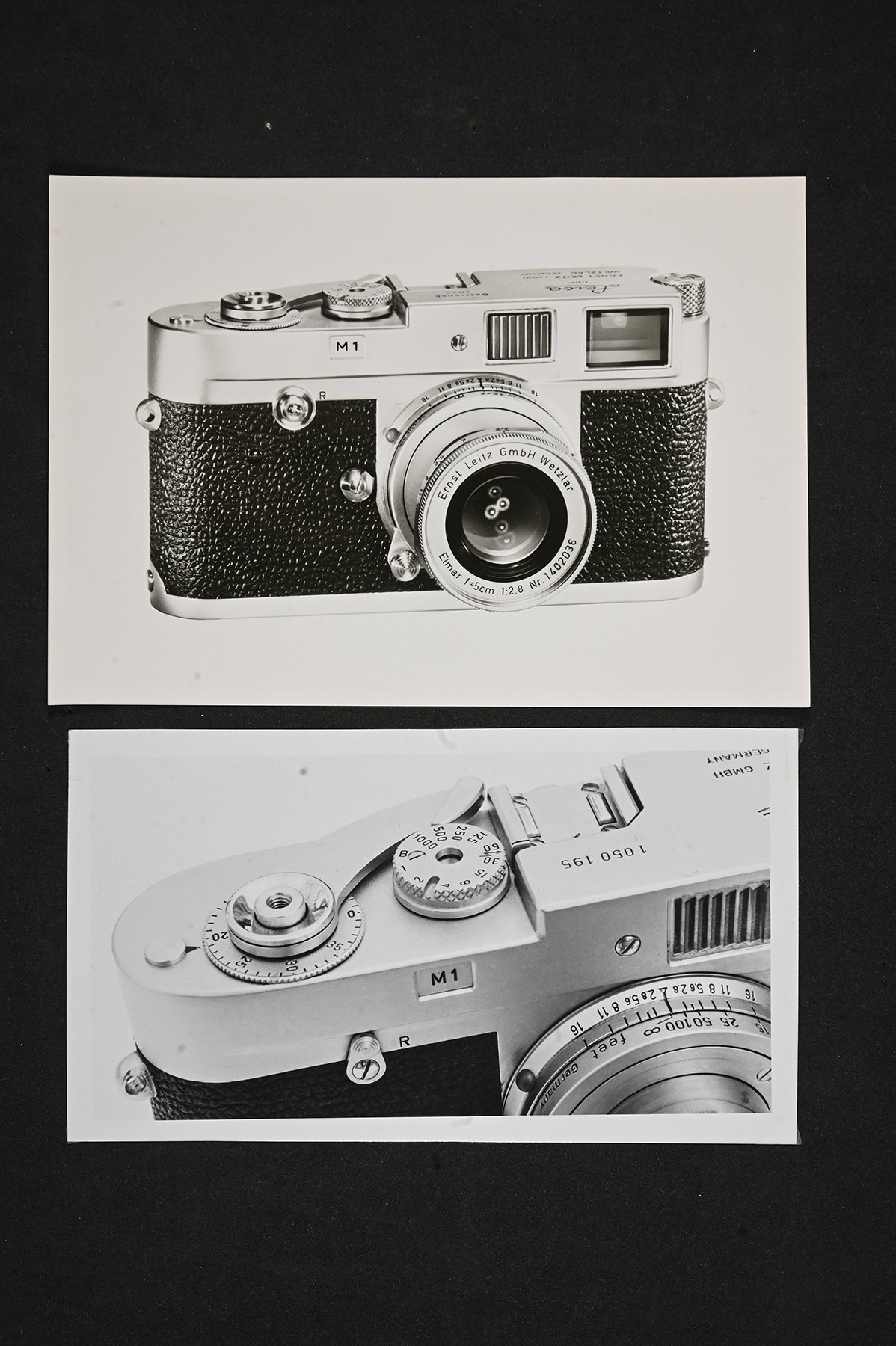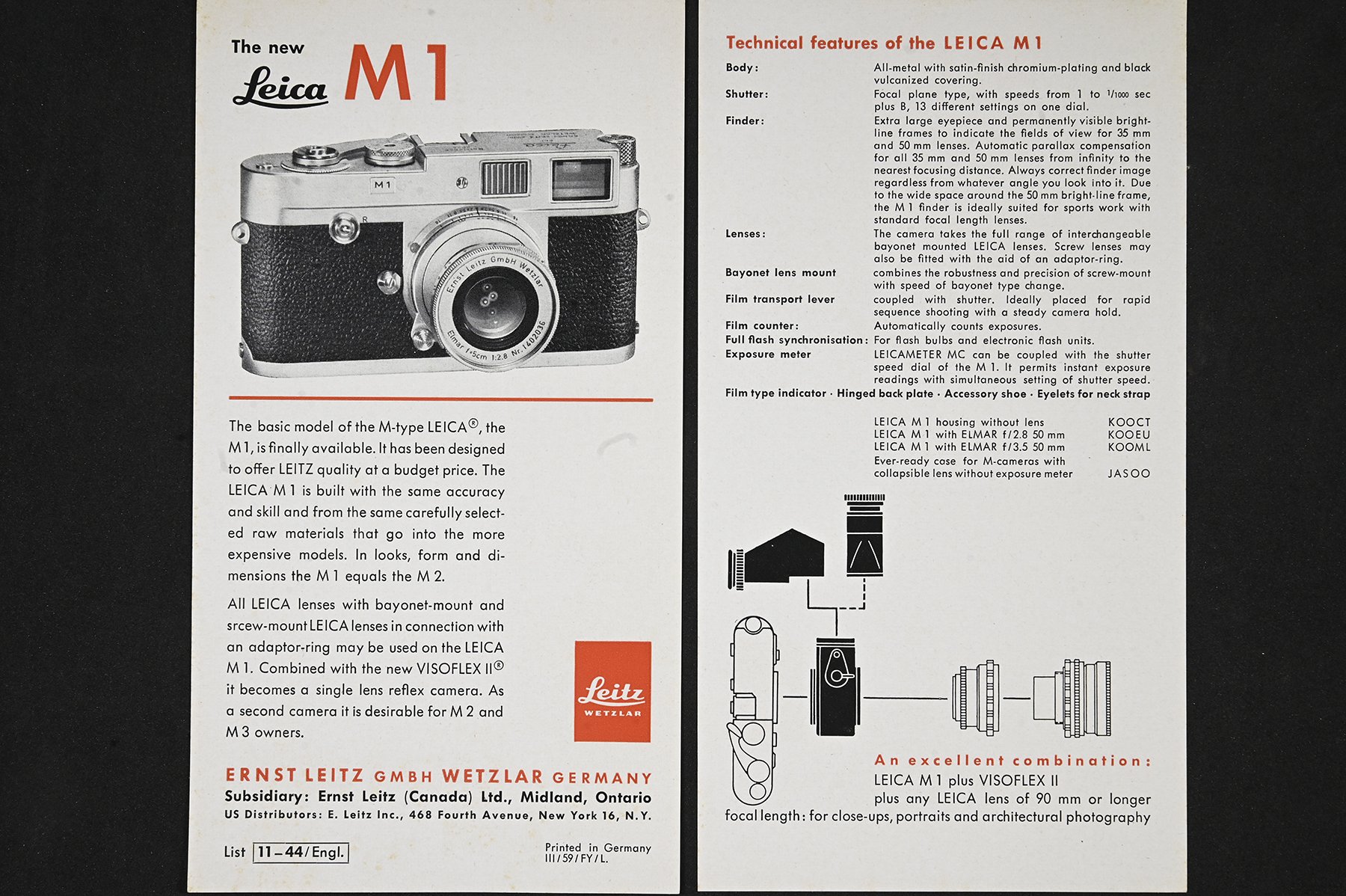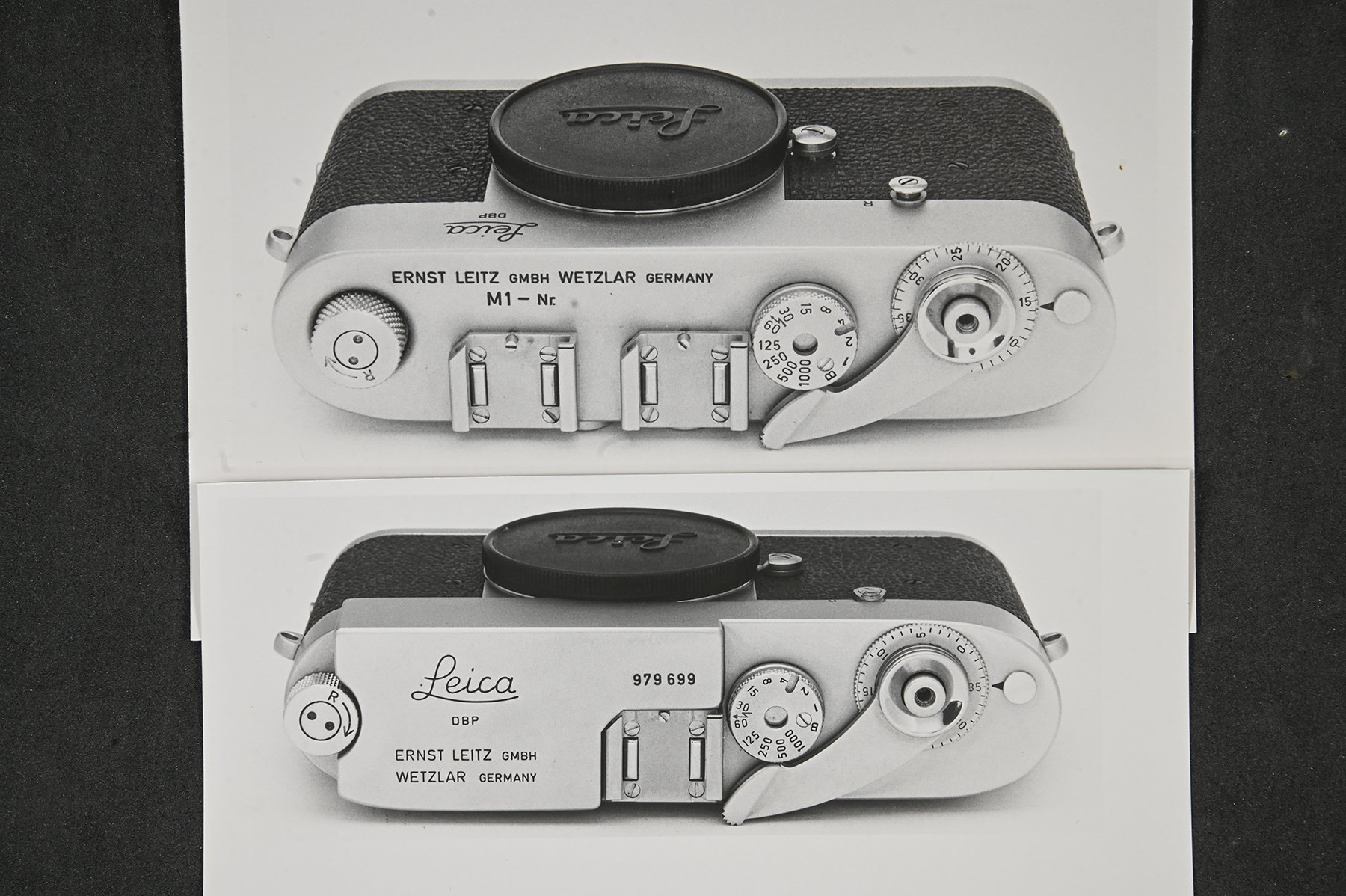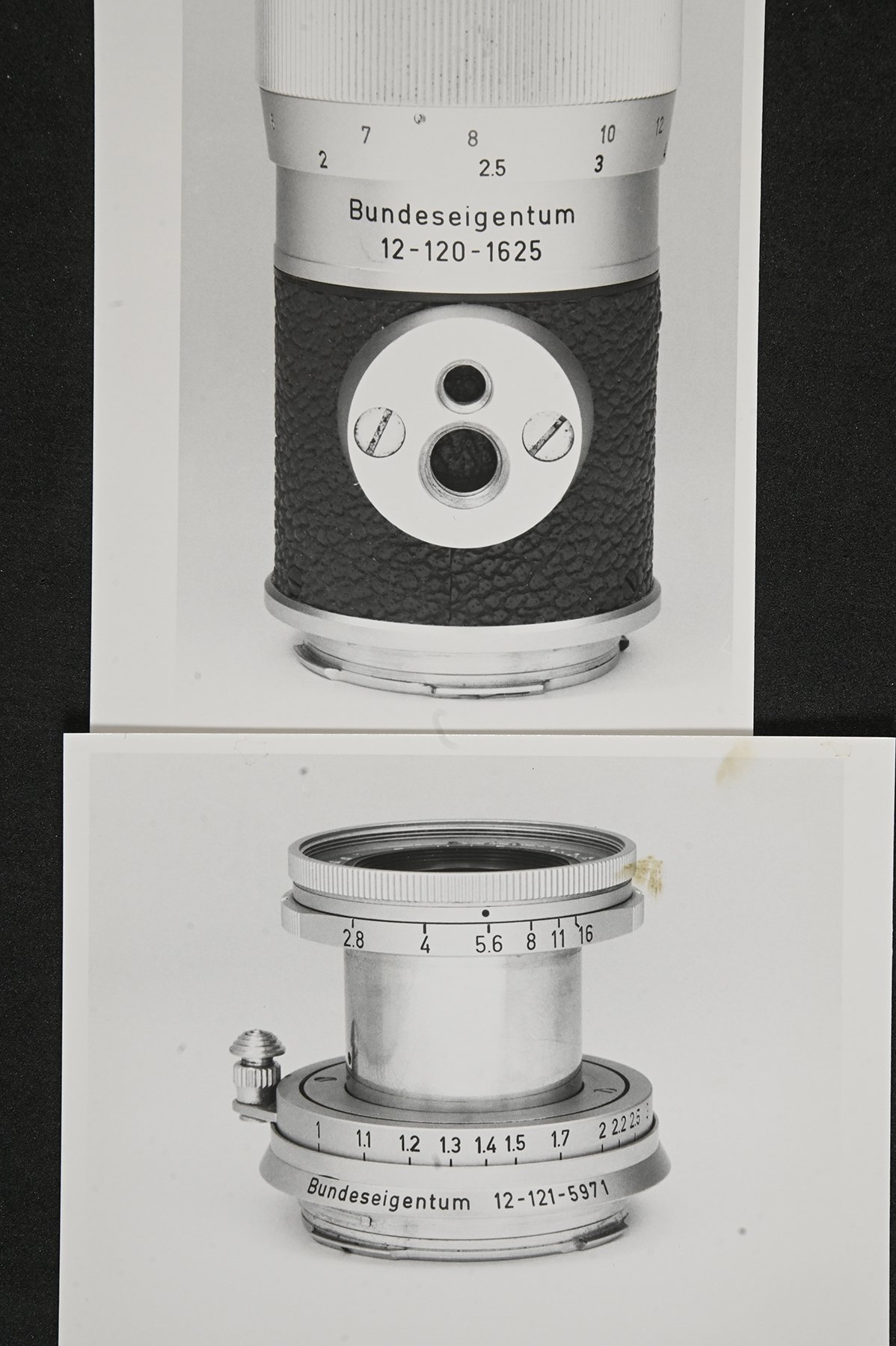The Leica M1: The Forgotten M?
A minimalist masterpiece aimed at scientists, techies, and the military.
Why Leitz named its iconic, new, totally redesigned rangefinder 35 the “Leica M3” when it debuted back in 1954 remains something of a mystery. The “M” assuredly stands for “mess-sucher” the elegantly concise German word for “combined rangefinder-viewfinder,” a new (for Leica) feature lacking on all previous II- and III-series screw-mount Leicas. But why M3 rather than M1 for this number one, first-of-its-kind, breakthrough design? One plausible explanation is that the last top-of-the-line screw-mount Leica prior to the introduction of the M3 was the Leica IIIf (pronounced “Three F”) so the initial M was dubbed the M3 to reflect the continuity of the Leica rangefinder line. Another explanation is that the “3” stands for the three frame lines in the M3 viewfinder window. There is a kind of logical sequence in starting with M3, and proceeding with the slightly simplified “economy” M2 of 1958, the bare bones M1 of 1959, the technically upgraded M4 of 1966, and in naming the two other M1 predecessors. the Leica MP (M Professional) of 1956 and the Leica MP2 of 1958
The M1 possesses uniqueness and rarity. According to Leica Wiki only 9,650 M1s were turned out between 1959 and 1964. Nevertheless, it gets little attention from Leica aficionados. Perhaps that’s because it’s not a rangefinder camera, but a bare-bones, rangefinder-less Leica M, primarily intended to be used for medical and scientific work when paired with a Visoflex reflex housing. Essentially the M1 is an M2 with an M2-style 0.72x viewfinder, complete with true projected parallax-compensating frame lines, but minus the rangefinder, self-timer, and frame line selector lever. The top-mounted, single-stroke film-winding lever, manually zeroed external frame counter, and rewind knob are identical to those on the M2. What would have been the front rangefinder window is fitted with a blanking plate neatly engraved (you guessed it!) M1 on all standard production models.
The viewfinder of the standard chrome M1 has only 2 frame lines, 35mm and 50mm, simultaneously shown in the finder. The rare olive-painted military versions of the M1 made for the German Army typically have 50mm and 135mm frame lines, the latter to accommodate the ultra-rare 135mm f/4.5 Hektor telephoto. The Hektor’s barrel is clad in olive green leatherlike material to match the covering used on the special-order military cameras. The olive-painted German Army versions of the M1 are exceedingly rare and stratospherically priced. According to the Leica Wiki production list, 50 in “chrome + green paint” were produced in 1959, 75 in “green paint” were turned out in 1961, and a final batch of 83 “green paint” M1s were made in 1964, the final year of M1 production. That’s a grand total of 208 military M1s, including those listed as “chrome + green paint!”
Some writers have scoffed at the notion that Leica M1 is a practical shooter’s camera, even going so far as to urge potential buyers to steer clear of it. This of course is nonsense, as anyone who’s done street or travel photography with an ancient scale-focusing Leica I can attest. We’re confident that the German Army personnel who were lucky enough to get to shoot with an M1 (mostly with the lens set to infinity) would agree that the M1 is capable of outstanding results. After all the, M1 is a Leica M, and like all Leica Ms, it's a beautiful object that’s exquisitely made, crafted of the finest materials, and eminently functional. Yes, it’s spartan all right, but it still deserves a place of honor in the golden pantheon of the analog Leica M.
A clean functional chrome Leica M1 currently fetches about $1,200-$1,800 on the major online auction sites. If you’re lucky enough to find a “Bundeseigentum” (German Federal Government Property) German Army M1 for sale with its original lens, expect to shell out around $30k!
Heartfelt thanks to James Lager for providing the photos for this article.





